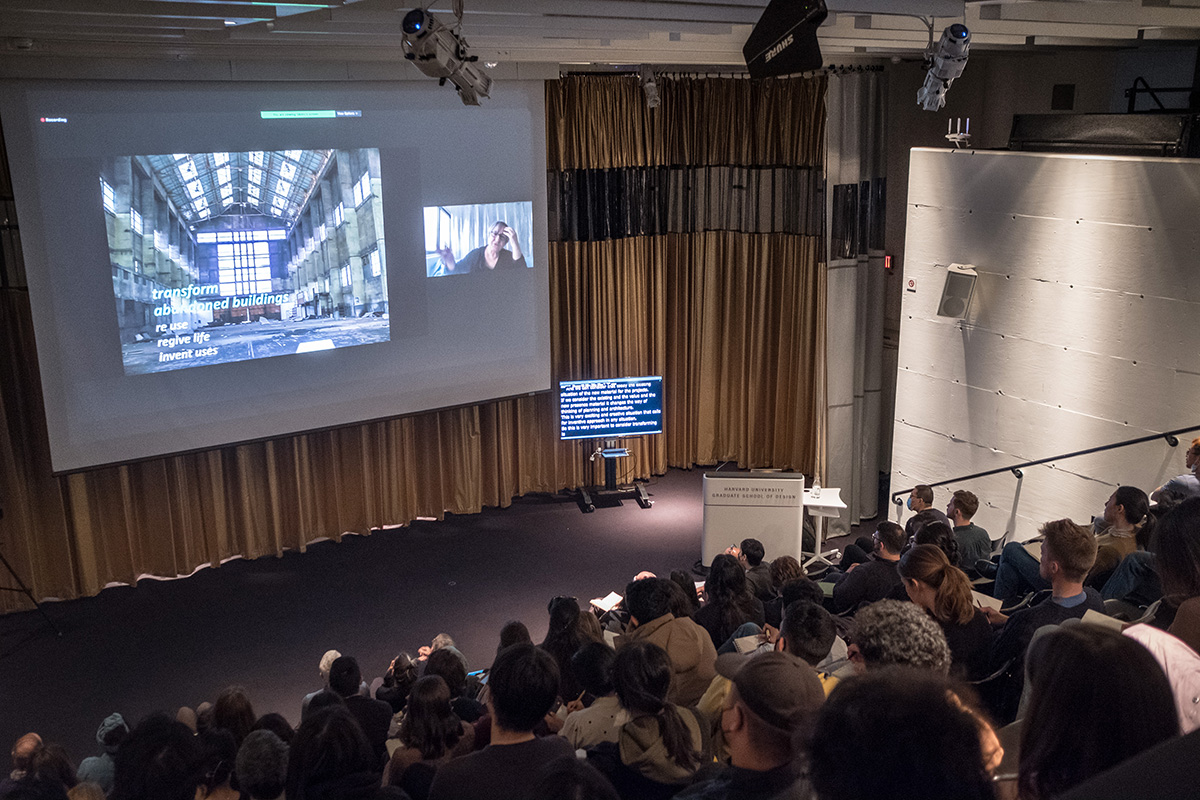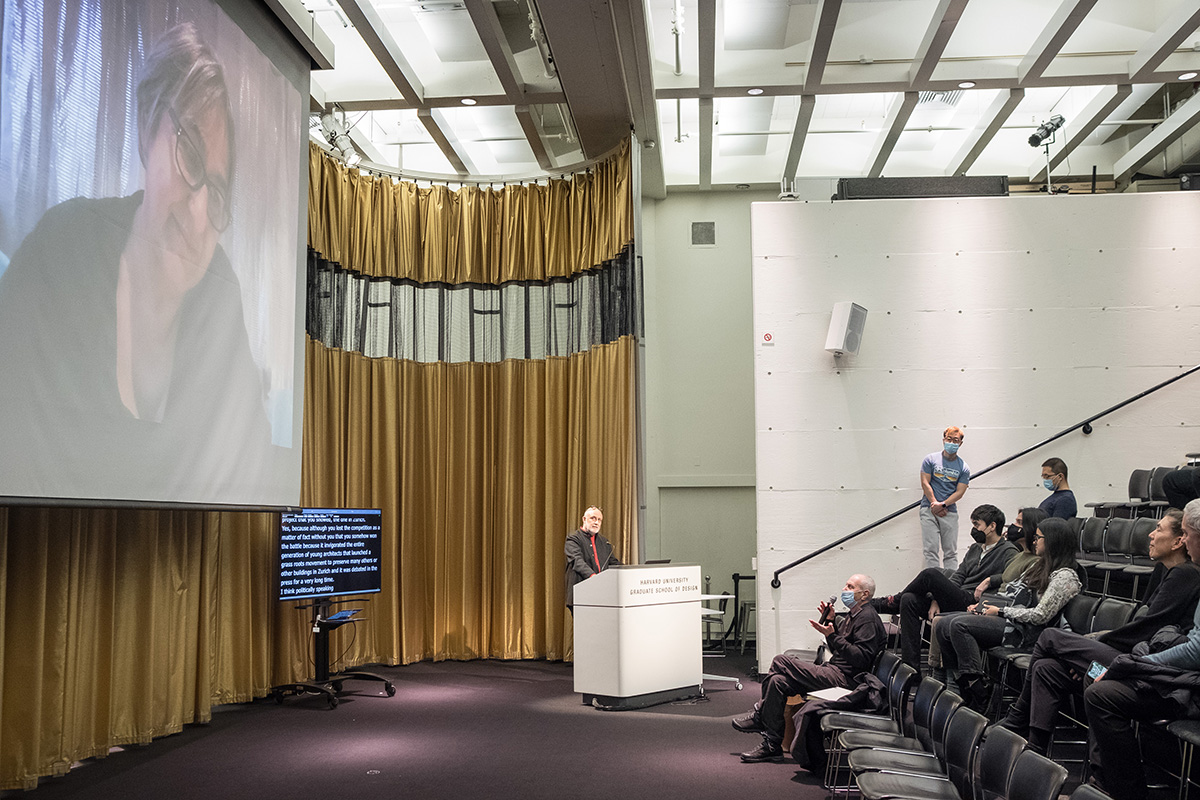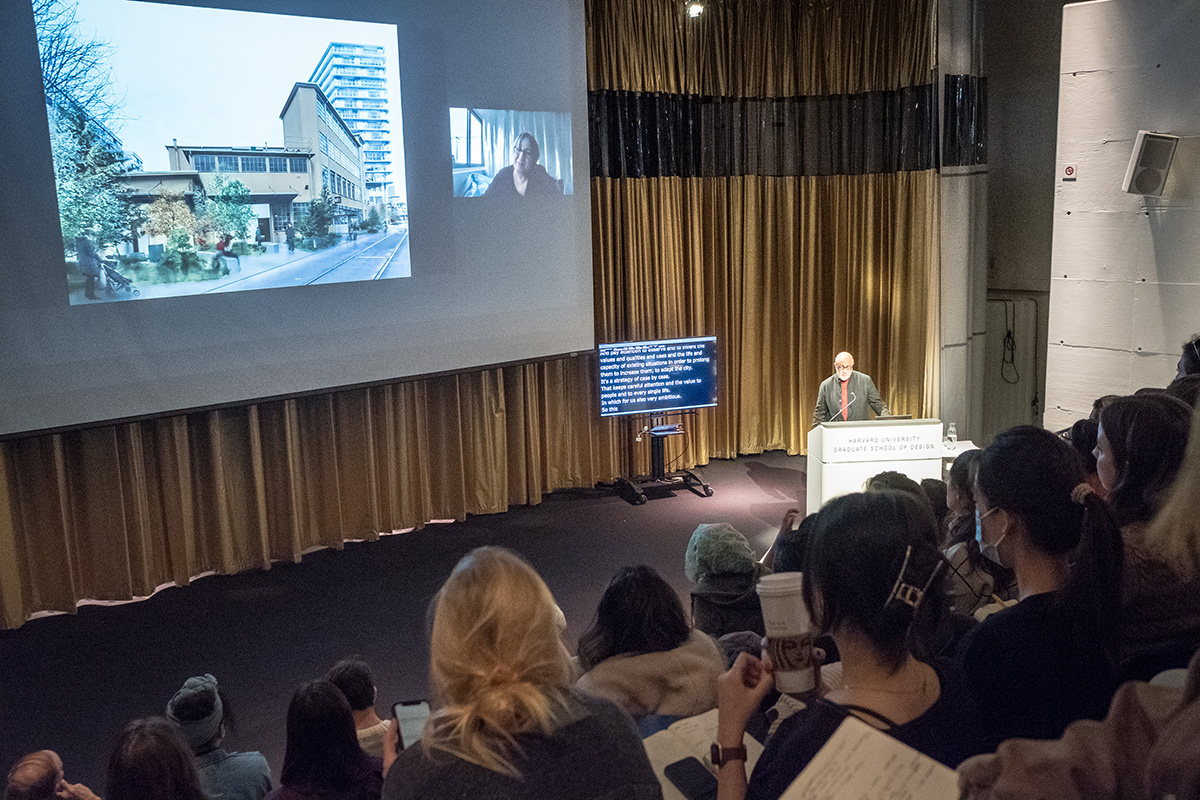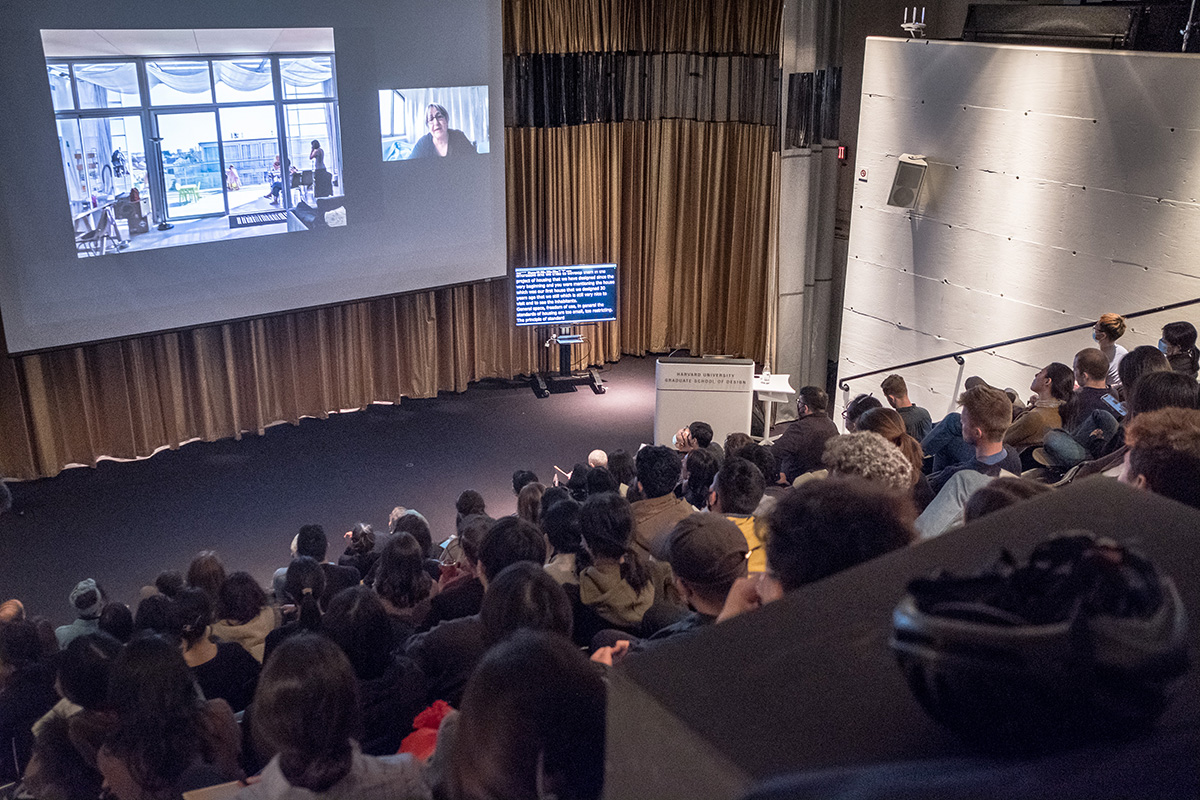“Living well in the city,” the French architect Anne Lacaton declared, “is the most important challenge of our time and our generation.” And within the city, “housing is the basic unit . . . one flat multiplied by ten, one hundred, one thousand, one million. . . . ” Housing is a central concern at Lacaton & Vassal, the architectural practice she established with Jean-Philippe Vassal in 1987. Their work on social and private housing, alongside projects for cultural and academic institutions, public space, and urban strategies, was recognized with the 2021 Pritzker Prize, architecture’s highest honor.
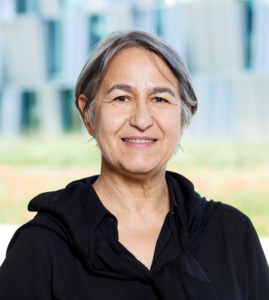
On Monday, March 29, Lacaton, a professor at ETH Zürich and previously a design critic (2015) and the Kenzo Tange Visiting Chair in Architecture and Urban Planning (2011) at the Graduate School of Design, returned to Gund Hall (virtually) to deliver the inaugural Jaqueline Tyrwhitt Urban Design Lecture. Rahul Mehrotra, the chair of Urban Planning and Design, noted that Lacaton’s practice is a perfect fit for Tyrwhitt’s legacy of “humanistic, ecological” urban planning and design.
Lacaton began her lecture by establishing the strategies and principles Lacaton & Vassal uses for housing projects. “The principle for [a] standard minimum,” she said plainly, “is wrong.” Instead, Lacaton emphasized the importance of generosity: designing spaces for living that center pleasure and quality. In Mulhouse, France, where Lacaton & Vassal built 59 social housing dwellings, the client agreed that “the standard minimum was no longer acceptable.” So the apartments were 60 square meters instead of the conventional 25—but constructed and rented for the same cost. Much of the additional space came from winter gardens that acted as a “bioclimatic system” for capturing solar gains and improving ventilation. “Every dwelling must have a private outdoor space . . . to have more pleasure, more freedom,” Lacaton explained. A similar approach was used in a 19-story building in Geneva, where floor-to-ceiling glass windows “let the landscape enter the apartment,” and generous winter gardens invited residents to appropriate and alter their spaces.
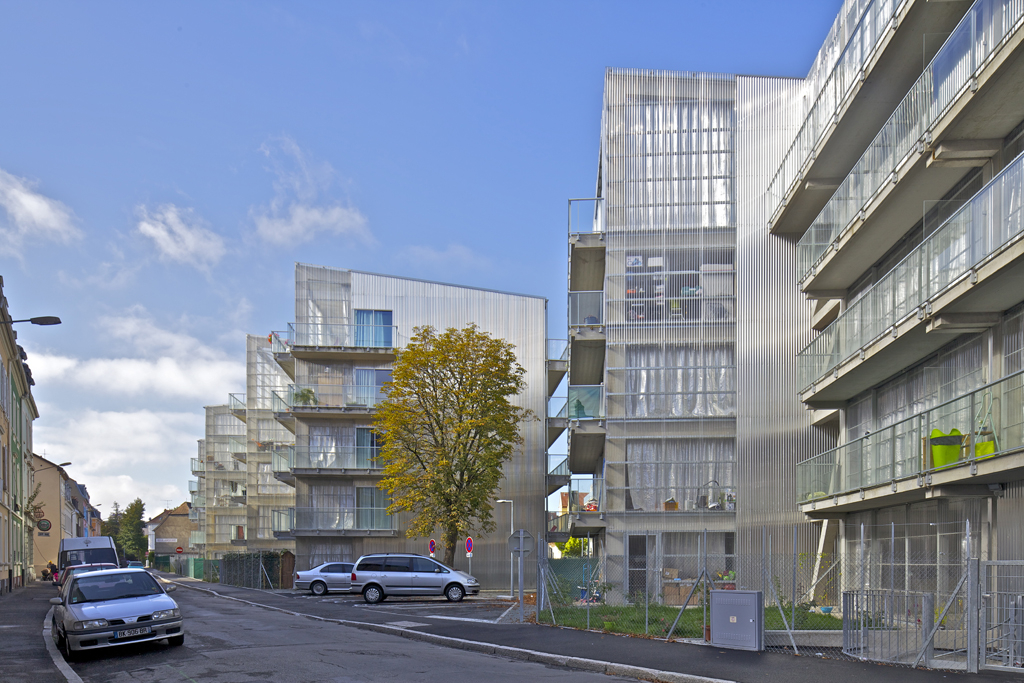
Equally important in Lacaton & Vassal’s practice is an emphasis on transformation over demolition. “Most of what exists has a lifespan which can be extended and prolonged,” Lacaton pointed out. Transformation uses the existing qualities of a site as “the driving force of a new project. . . . Transformation is as ambitious as building new.” The original competition brief for a public regional collection of contemporary art (FRAC) in Nord-Pas de Calais, Dunkirk, France, sought to renovate a historic shipyard building. But when Lacaton & Vassal visited the space, they found that the building was an “amazing void . . . full of light, capacity, and opportunities.” Their daring proposal was to conserve the existing building for large-scale exhibitions, and build a new, twin building with a lightweight “double envelope” structure to improve energy efficiency. By changing the brief, they produced an ambitious, expanded space for the FRAC. “It’s our role as architects,” Lacaton noted, “to challenge everything. It’s not to obey . . . to be very good pupils, to take the brief and say, ‘Okay.’ It’s our role to have a positive critique. . . . Why is the [brief] defined by this? Why is it making compromises?”
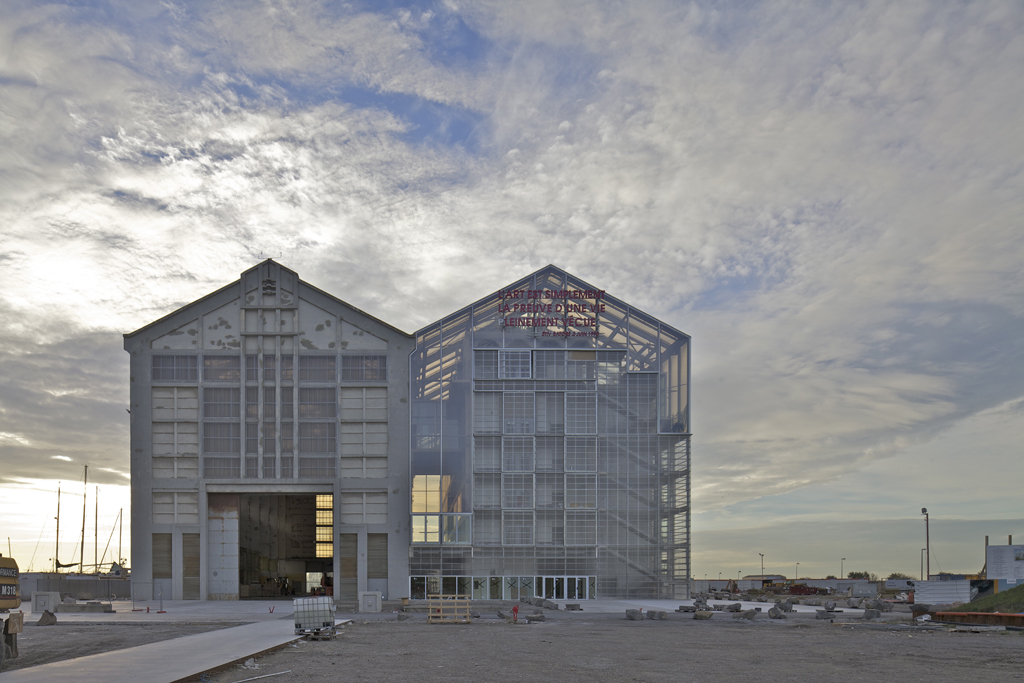
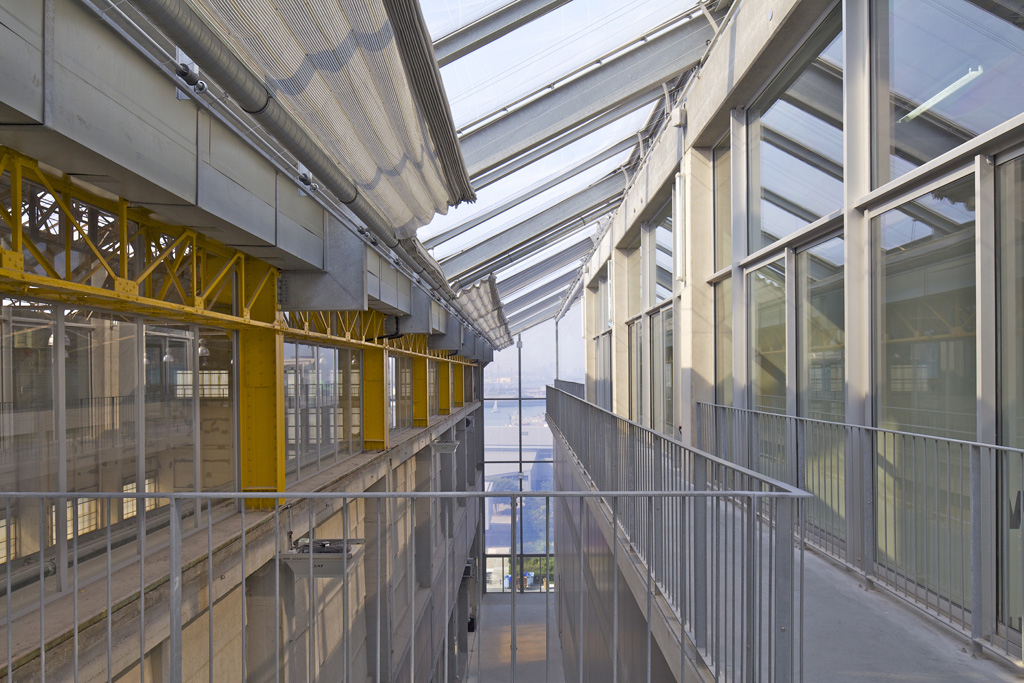
This principle of transformation also produces a more sensitive, affordable approach to social housing. As French social housing agencies seek to renew buildings constructed in the 1960s and 1970s, there is often a tendency to demolish and reconstruct. But Lacaton & Vassal’s philosophy is different: “Never demolish. Never subtract, remove, or replace. Always add, transform, and utilize, with and for the inhabitants.” The original plan for a project in Bordeaux was to demolish three buildings of 530 dwellings built in the early 1960s. In lieu of this “violent” disruption and displacement for inhabitants, Lacaton & Vassal expanded the existing apartments by 53 percent and added eight new ones. During the two-year construction process, all residents remained in their homes. The result, compared to demolishing and rebuilding: one-third of the construction costs and half of the carbon footprint. No material was wasted, and the transformation led to a 60 percent reduction in energy consumption. “Transformation means: spend less to do more,” Lacaton said. Such projects can “intensify, densify, transform the city from the inside . . . without losing quality.”
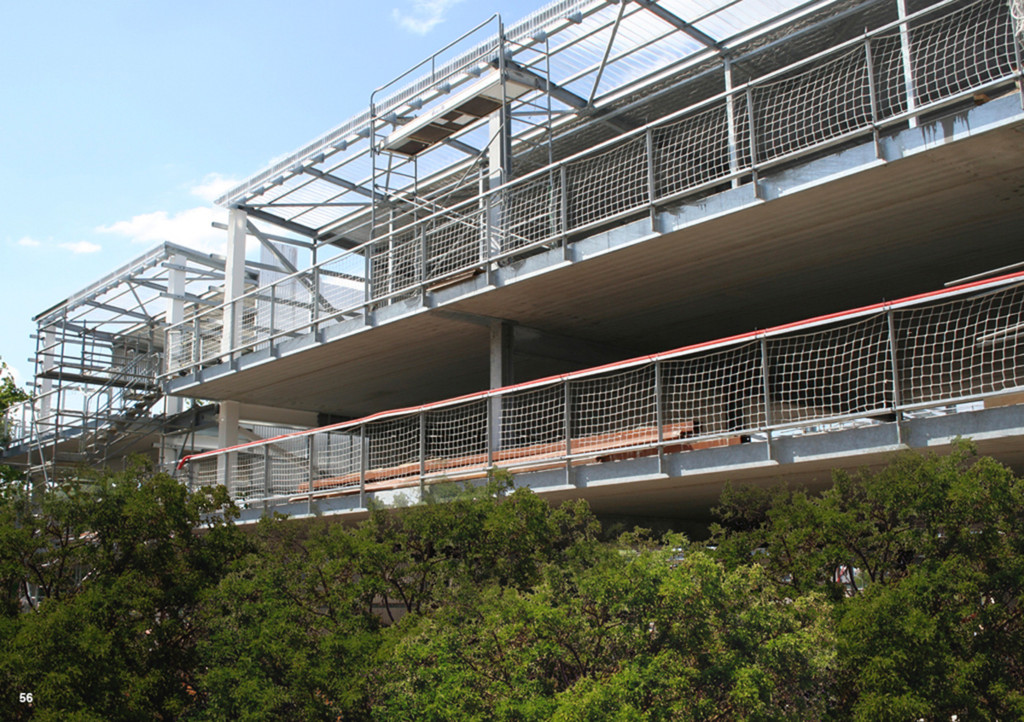
Even unbuilt projects testify to Lacaton & Vassal’s principles. In one proposal for an ecological neighborhood in Saint-Nazaire, France, they sought to not “erase and eradicate” the existing forest on the site, as the brief suggested, but rather to build 250 dwellings raised 12 meters above the ground, allowing the forest to regenerate below. Similarly, for an unrealized proposal in Zurich, where a former factory hall was used for concerts and performances, Lacaton said: “Why demolish a place which works well . . . [with] no signs of age or obsolescence?” They proposed a new building that rested on top of the existing factory foundation and tripled the square meters of the site. Professor Marc Angélil, a colleague of Lacaton’s at ETH Zürich, noted: “Although you lost the competition . . . you won the battle, because it invigorated an entire generation of young architects, who launched a grassroots movement to preserve many other buildings in Zurich.”
In closing, Lacaton reflected, “We promote an urbanism . . . to adapt the city,” through an approach that “gives careful attention to people and everything alive”—and to contemporary concerns of sustainability and social justice. Addressing the audience online and in Gund Hall, she said: “We need architecture to really face—with seriousness and skill, but also with poetry and humanity—all the issues of building for society.”
